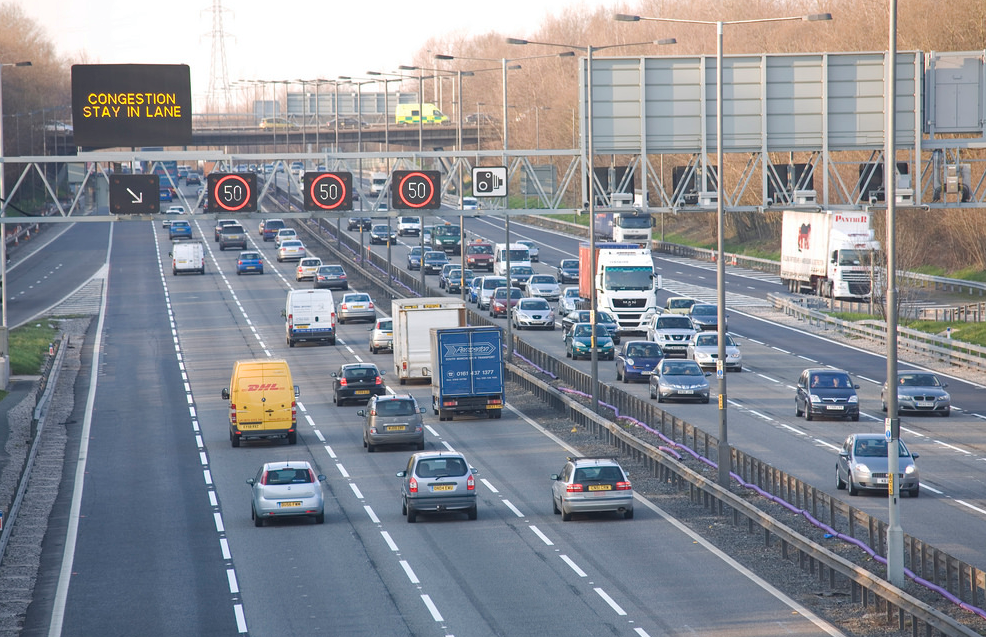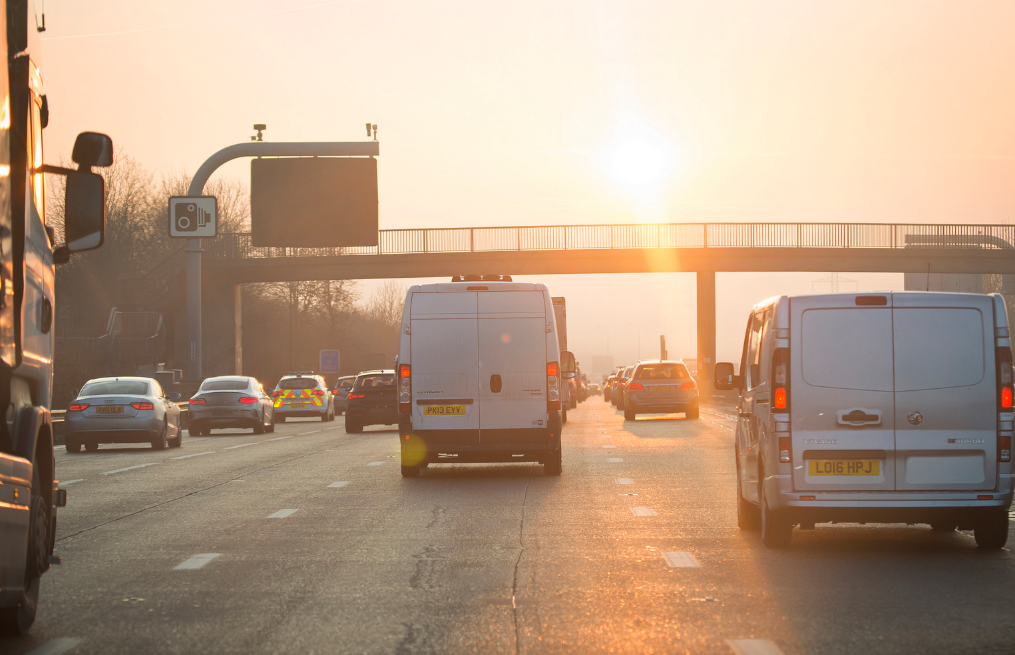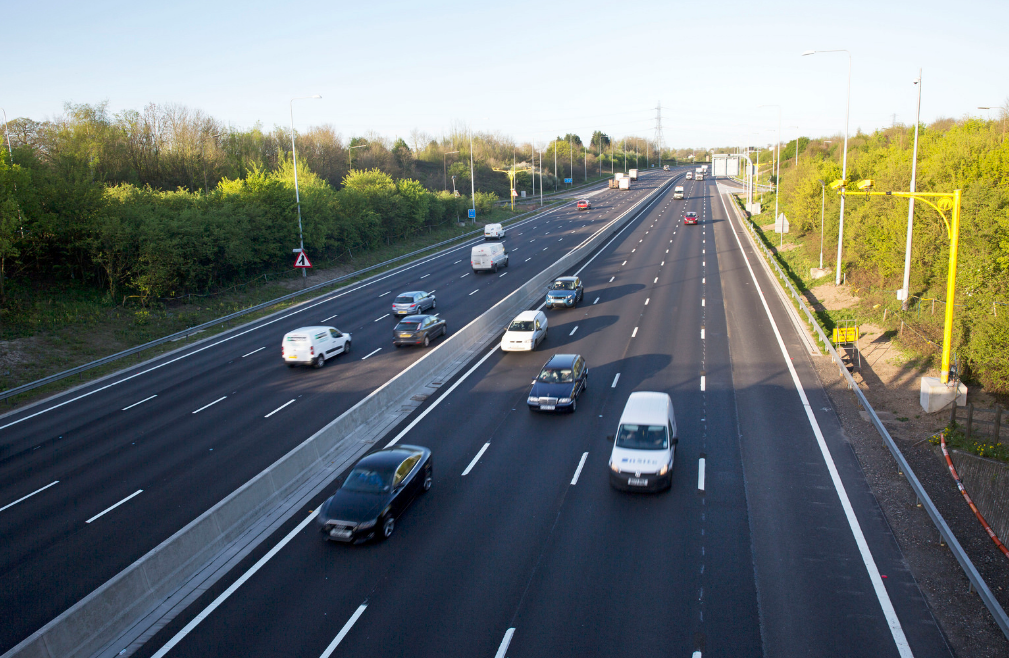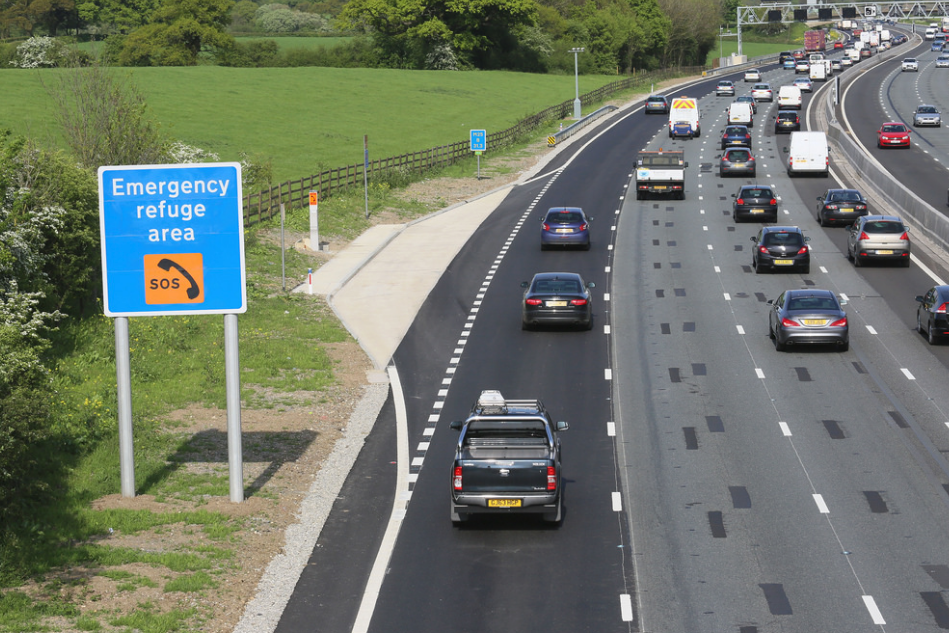We are a nation of nervy motorway drivers – but is it really that surprising? We're not taught how to drive on motorways during our driving lessons – however, that's set to change.
If you're getting hot and bothered at the mere thought of driving on the motorway, here's how to tackle the tricky parts – and keep calm and focused behind the wheel.

Image credit: Highways Agency/Flickr
How to join a slip road
Slip roads help you adjust your speed to fit in with the drivers already on the motorway. You may think you're going too fast to join the traffic flow – but trust in your abilities, and the other drivers around you. You need speed to seamlessly join the traffic already on the motorway.
Entering a motorway at a slow speed is dangerous – even though it may feel 'safer'. Other drivers behind you will have to suddenly brake, and you'll cause jams. Basically, you'll interrupt the flow of the traffic, and you'll 'force' drivers already on the motorway to switch lanes to accommodate everyone.
Some drivers in lane one (the left hand lane) may move over for you, but you don't assume that all of them will. It's up to you to find a gap and merge, rather than expect people already on the motorway will move out of your way.
- As you enter the slip road, get an idea of the motorway traffic to help you match your speed. Are there jams? Is the traffic slow moving? If so, slow down accordingly.
- Try and find a gap with plenty of room to fit your car in. Once you have marked your spot, you may need to accelerate more or slow down slightly to fit in.
- If the motorway is busy in the left lane, don't panic. Drivers may slow down or change lanes to let you in. However, it's ultimately up to you to safely join the left hand lane.
Here are a few handy hints and tips from the Highway Code:
- Make sure you don't cross solid white lines that separate lanes or drive on the hard shoulder.
- You should stay on the slip road if it continues as an extra lane on the motorway.
- Take it easy – stay in the the left hand lane long enough to adjust to the traffic speed before you start to think about overtaking.

Image credit: Highways Agency/Flickr
Stopping on a slip road
It's illegal to stop on a slip road unless there is heavy congestion, or the police tell you to.
This is because you'll cause congestion behind you, and you'll prevent the slip road from doing its job – allowing motorists to get their speed up before joining motorway traffic.
Basically, if you stop, you'll 'ruin the flow' of the slip road. You also run the risk of getting rammed from behind if the slip road's on a bend and other drivers will be joining it at high speed.
Leaving the motorway
- Get into the left-hand lane before you need to leave the motorway – don't leave it to the last minute. You will need to give yourself plenty of time to get into position.
- If you need to move across, cross the lanes safely, one lane at a time, using the 'mirror, signal, manoeuvre' technique.
- If you miss your exit, carry on to the next one.
- Pull over as soon as it's safe to re-route your journey and get your bearings.

Image credit: Highways Agency/Flickr
Overtaking on the motorway
Lorries can look like the road-owning monoliths of the motorway, but you can overtake them. It just takes a little bit of planning.
- Do your 'mirror, signal, manoeuvre' – and gently pull out into the middle lane when there's a gap.
- Take your time – this isn't a race. As long as you're going faster than the lorry and within the speed limit, you'll manage to overtake them.
- Don't feel apprehensive about other middle-lane drivers coming up behind you – you're using this lane what it's meant for – overtaking slower traffic in the inside lane. They will just head into the outside lane to overtake you, if needs be.
- Once you're ahead of the lorry, make sure there's enough space between you, and mirror, signal, manoeuvre. Slot back into your space in the left-hand lane.
Hogging the middle lane
The middle lane has had the 'Goldilocks' effect on drivers for decades; it's not too fast, and not too slow, so seems to be 'just the right speed' for the average motorway driver.
However, you can't stay in it for a prolonged length of time if the inside lane is clear – the middle lane is meant for overtaking, and you're putting other drivers at a disadvantage as they can't use it to easily overtake.
New penalties to tackle 'middle lane hogging' came in in 2013 under a new careless driving fixed penalty offence.
Middle lane hogging has been named as the 'third most irritating driving habit' in our AA-Populus Driver Poll, completed by around 20,000 drivers every month – just behind tailgating and talking on a mobile.
Sticking in the left hand lane
Even if you stick to the inside lane, driving slowly on motorways can be very dangerous, as closing speeds between traffic are higher.
There's no minimum speed limit on motorways but if you're driving too slowly the police could potentially pull you over for careless driving.
Here's what you should know before you decide to stick to the inside lane.
- You'll avoid the need for frequent lane-change manoeuvres
- Faster drivers behind can easily overtake (assuming there are no middle lane hogs)
- You're in the lane closest to motorway exits so won't need to pick your way through lanes of traffic to get off the motorway
- You'll get better fuel economy driving at a steady, slower speed.
- On smart motorways it'll be impossible to just stick to the inside lane. At busy junctions, the left hand lane becomes a dedicated off-lane approaching the junction and a dedicated on-lane beyond it. So, unless you're taking the exit, you'll have to move out to the middle lane to pass the junction and then merge back into the left hand lane when you're beyond it.
- Your speed is limited by the vehicles ahead of you.
- You could find yourself following an HGV or a car towing a caravan for mile after mile.
- Your vision of the road ahead could be reduced if you're stuck behind lorries.
The outside lane
The speed limit for cars on UK motorways is 70mph. However, the outside lane isn't for driving fast – it's for overtaking cars in lane 2 (the middle lane) that are slower than you. You'll still have to stick to the speed limit, though – even if you do get a sudden rush of confidence.
Smart motorways
According to AA research, 38% of drivers say they would not drive in lane one (the left hand lane) of a motorway without a continuous hard shoulder – 37% of interviewees were scared of coming across a broken down vehicle, and 13% said that they believed lane one was 'the lorry lane'.
The government's converting more and more miles of motorway into smart motorway so the chance of coming across one's increasing all the time. If you have to use a smart motorway here are some hints and tips:
- Never drive in a lane closed by a red 'X'.
- Smart motorways have variable speed limits – keep to the speed limit shown by overhead signs.
- Some smart motorways have a hard shoulder that can be turned into a traffic lane when it's busy. A solid white line indicates the hard shoulder – don't drive in it unless signs say you can.
- A broken white line indicates a 'normal' lane – you're fine to drive in this lane.
- If you start having car problems or see dashboard warning lights, try to get to the next exit, service area or emergency refuge area (layby) if you can.
- If you stop in an emergency refuge area – look out for the orange 'sos phone signs' – get out on the passenger side and use the SOS phone to speak to the traffic control centre. Follow their instructions.
Breaking down on a motorway
Motorways are dangerous places to stop, even if there's a hard shoulder or you're in an emergency refuge area (ERA) on a smart motorway, so it's best to drive on to the next exit if you possibly can.
Reduce the risk of breaking down by making sure your tyres are in good condition and correctly inflated, and that you have enough fuel for your trip.
Call us on 03330 046 046 if you've broken down, or use our app.
Image credit: Highways Agency/Flickr
Breaking down in an emergency refuge area
If you're in an emergency refuge area you must use the SOS phone provided – when you stop and before you leave – as it connects straight to the regional control centre.
Breaking down in a running lane
If you can't get to an emergency refuge area and have to stop in a running lane, turn your hazard lights on. Unless you're in the left hand lane and can get out safely on the left hand side, stay in the car with your seatbelt on and dial 999.
Breaking down on a normal motorway hard shoulder
Stop as far to the left as you can with the wheels turned to the left and your hazard warning lights on.
The first priority once you've stopped is to get everyone out of the vehicle (using the doors away from the traffic) and over the barrier to a place of relative safety. This is because there's a high risk of cars (and people) on the hard shoulder being struck by passing traffic.
Once you're in a safe place, call us on 03330 046 046.
What to do if you or your passengers can't leave the car
If you or any of your passengers can't get out of the car for any reason (cold and wet weather doesn't count), remain in your seats with your seatbelts on.
Easy rules for the hard shoulder
Remember that the hard shoulder is only for emergencies, not for making calls, having an evening walk, or comfort stops.
Here's our guide to driver location signs (the blue signs on motorways which pinpoint where you are). They're handy even if you have GPS and you need to let us or the police know where you are.
If the thought of breaking down on a motorway gives you the jitters, AA-X can help. It's a nifty little device for AA members which keeps an eye on your car's health and will let you know if it spots an issue, like battery or electrical problems.
You'll need to check that your car's compatible, then you can just order online. It's a great way to check your car's in good shape before making a long journey.
How to get past driving anxiety
If you've got to take a trip on the motorway and you're feeling scared of driving, here's how to cope.
- You could book some motorway driving lessons to help build your confidence before the trip.
- Plan your journey – use our Route Planner, and make sure you have the correct postcodes in your sat nav.
- If you can, take a friend or family member with you.
- Travelling alone? Give yourself plenty of time, let people know your ETA, and pack some calming music to help you relax on the drive.
- Don't drink lots of caffeine before you leave – stick to herbal teas and fruit juice. Caffeine acts as a stimulant – it's helpful in small doses, but if you drink it to excess, you could start to feel jumpy or nervous.
- Make sure you've had something to eat and you've got some water for the journey – this will keep your blood sugars up and make sure you're not distracted by hunger or thirst.
Anxiety and panic attacks while you're on the road
If you suffer from mild to moderate anxiety, you're fine to drive.
However, if you have severe anxiety, you may have to contact the DVLA and tell them about your illness.

